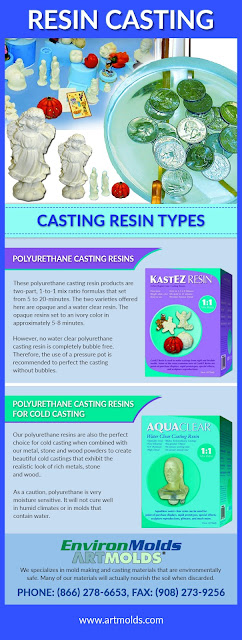Liquid latex rubber is a simple and easy to use compound. The properties are varied – ranging from economical to tough and durable. However, proper usage is essential to make the most of the rubber.
Latex rubber is a natural rubber with a base of water and ammonia. It is an inexpensive material that is available in a ready-to-use form - no measuring or mixing is required at all. What’s more, the same latex comes in two types – mold making rubber and casting rubber.
Latex rubber is a natural rubber with a base of water and ammonia. It is an inexpensive material that is available in a ready-to-use form - no measuring or mixing is required at all. What’s more, the same latex comes in two types – mold making rubber and casting rubber.
The latex rubber is easy to use and works to be the most economical of
all mold making and casting materials. However, there are certain
precautions that the artist should keep in mind to be able to use the
rubber compound well. Such as –
• Latex comes in a liquid form. The rubber can last for years as long as it is kept in an air-tight container and away from direct sunlight. Exposure to air or light will cause the latex to turn pink. Yet, this does not affect its workability.
• In case the latex gets thick, it can be thinned easily by adding a bit of water or household ammonia itself.
• Do not allow the rubber to freeze as this will render it unusable.
• Making a latex mold takes time and patience. Do not pour the liquid latex over the model and expect it to set solid. The latex should be applied one coat at a time, with each coat being allowed to air dry properly before applying the next one. Else, the outer layers will set before the inner layers, causing pooling, soft spots or even rendering the mold unusable. 7 to 10 coats are usually required to build up the thickness of the mold.
• A latex cast can be made only in a plaster mold. The process is simple – just pour the liquid latex into the mold, swirl it well and leave it for some time before pouring out the latex once again. A thin skin will be left behind in the mold that cures quickly. This procedure is commonly used to make a latex mask.
• A latex mold or cast cannot be colored in the usual manner using regular paints and dyes as they will tend to crack. Special latex pigments in different shades are available in art stores. The required color can be added to the liquid latex or even painted on a cured latex surface. For the latter, the pigment should be diluted with liquid latex rubber itself. Some artists even mix clothing dyes in the liquid latex.
• A cured latex mold or cast will last long – for 20 years or even more. Cured latex can be vulcanized or dipped in boiling water to prolong its life.
• Latex rubber is easy to clean as well. Just allow the spilled rubber to set and it can be peeled off easily. Tools and brushes can be cleaned with warm water itself.
• In case the latex gets thick, it can be thinned easily by adding a bit of water or household ammonia itself.
• Do not allow the rubber to freeze as this will render it unusable.
• Making a latex mold takes time and patience. Do not pour the liquid latex over the model and expect it to set solid. The latex should be applied one coat at a time, with each coat being allowed to air dry properly before applying the next one. Else, the outer layers will set before the inner layers, causing pooling, soft spots or even rendering the mold unusable. 7 to 10 coats are usually required to build up the thickness of the mold.
• A latex cast can be made only in a plaster mold. The process is simple – just pour the liquid latex into the mold, swirl it well and leave it for some time before pouring out the latex once again. A thin skin will be left behind in the mold that cures quickly. This procedure is commonly used to make a latex mask.
• A latex mold or cast cannot be colored in the usual manner using regular paints and dyes as they will tend to crack. Special latex pigments in different shades are available in art stores. The required color can be added to the liquid latex or even painted on a cured latex surface. For the latter, the pigment should be diluted with liquid latex rubber itself. Some artists even mix clothing dyes in the liquid latex.
• A cured latex mold or cast will last long – for 20 years or even more. Cured latex can be vulcanized or dipped in boiling water to prolong its life.
• Latex rubber is easy to clean as well. Just allow the spilled rubber to set and it can be peeled off easily. Tools and brushes can be cleaned with warm water itself.
0 Comments












